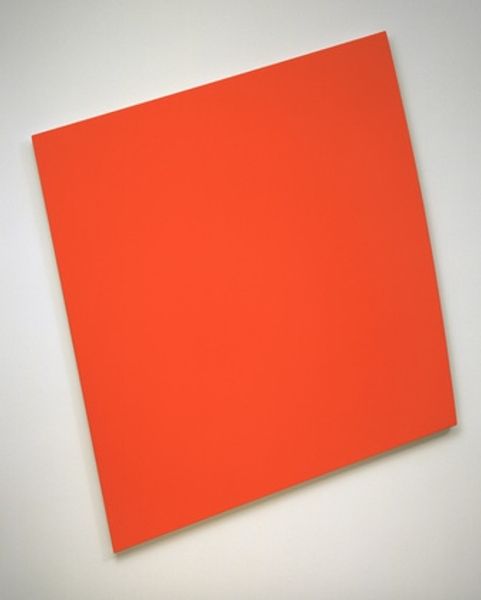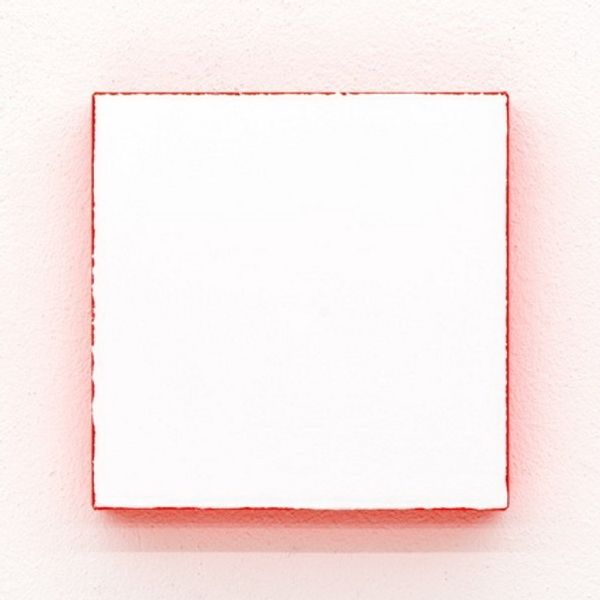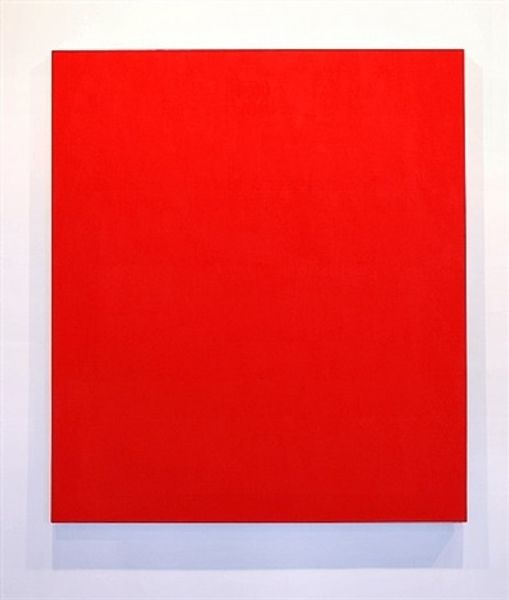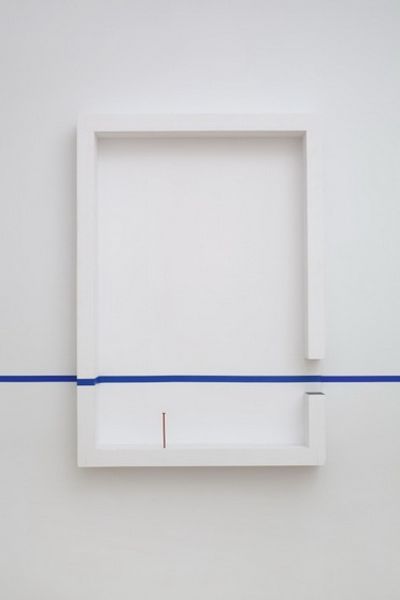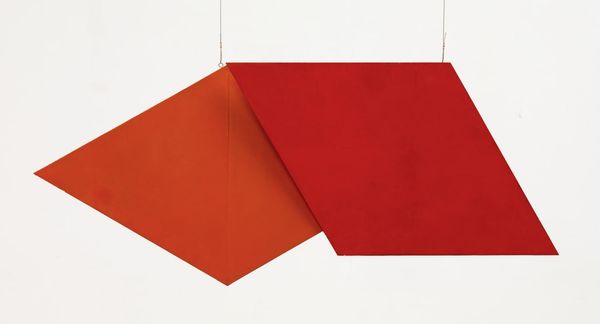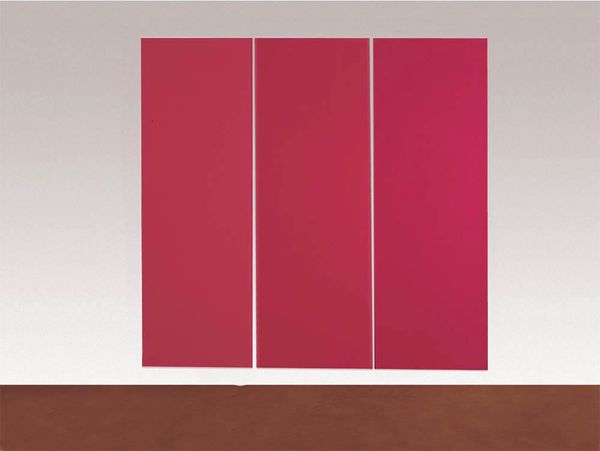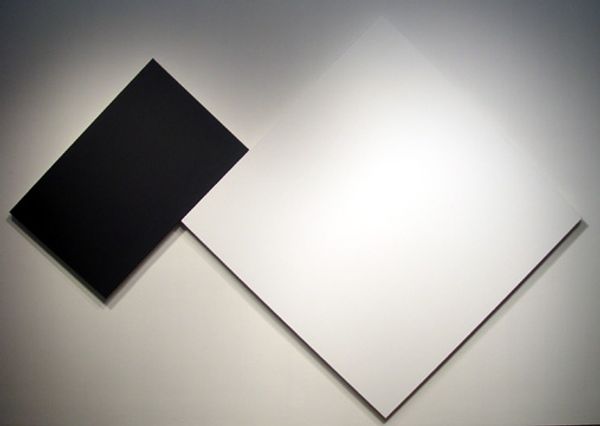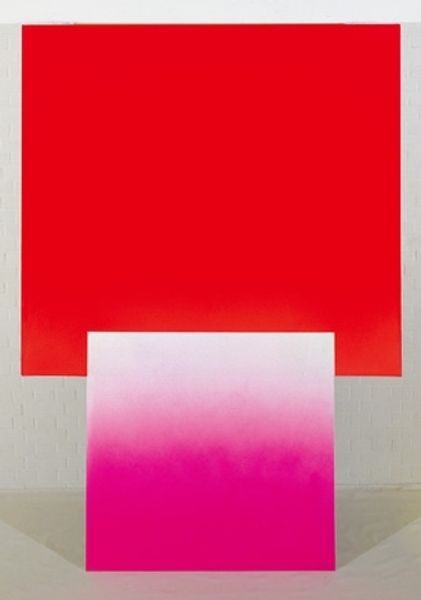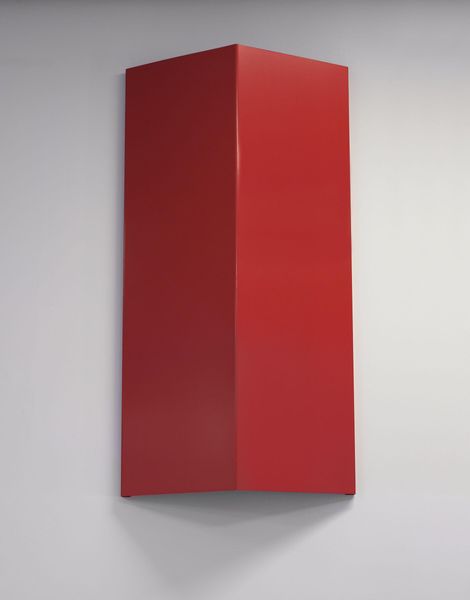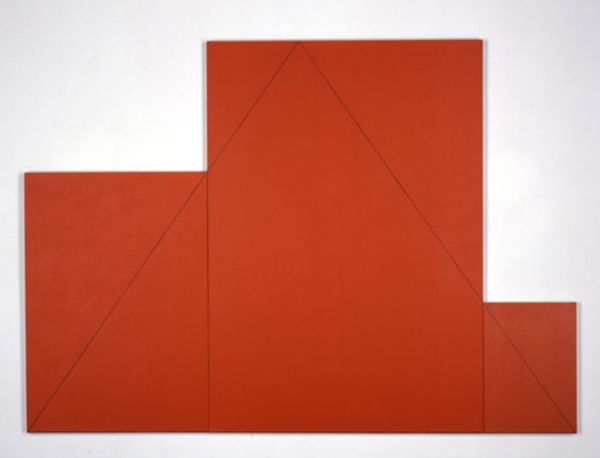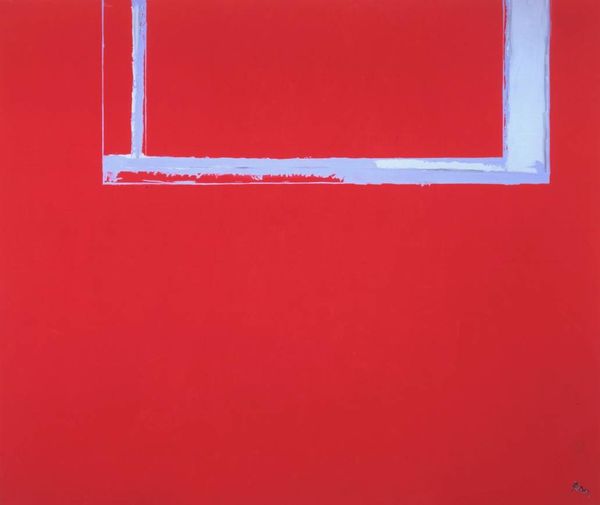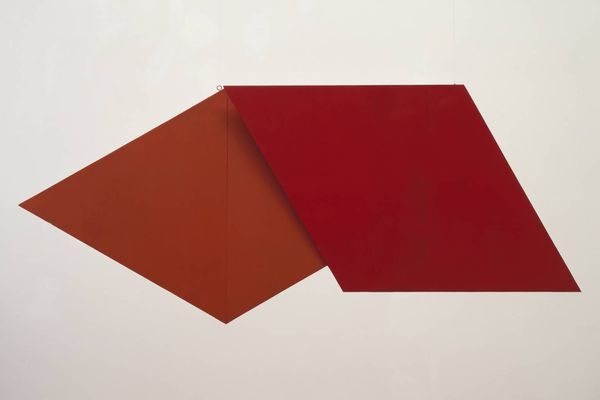
painting, acrylic-paint
#
painting
#
circle
#
acrylic-paint
#
3d shape
#
geometric
#
abstraction
#
modernism
Copyright: Claude Rutault,Fair Use
Curator: This is Claude Rutault’s "dé-finition/méthode #500: peinture en équilibre" from 2010, crafted with acrylic paint. It certainly demands attention at first glance, wouldn’t you agree? Editor: Absolutely, it strikes me immediately with its almost unsettling stillness. The bright red backdrop, the floating square… and then that unassuming beige circle resting at the bottom. It's quiet but also loud at the same time. Curator: It’s interesting that you perceive it that way because Rutault was very invested in demystifying painting, making it less precious and more accessible through a series of definitional methods. He often repainted walls the same color as the canvas hanging on it. His goal wasn't to create grand statements, but to examine painting's relationship to its support and the surrounding architecture, thereby interrogating display and production values. Editor: So the context becomes integral to the piece itself. Does that relate to the work’s title? It evokes balance. It's almost like it speaks to this tension between surface and support you mention, making the viewer consider their own position within the space, both literally and metaphorically. This can be read withing different discourses that involve spatial studies, performativity or relational aesthetics. Curator: Precisely. He aimed to strip away the traditional artist’s ego and center on the tangible aspects: paint application, the texture of materials, and the ways a painting alters and is altered by the context. Rutault created a conceptual framework by providing precise instructions for his paintings to be produced, highlighting the reproducible, the everyday and the economic factors of painting. Editor: Then perhaps this isn't just an exercise in abstraction, but an inquiry into the very mechanisms by which art attains meaning? What power structures contribute and sustain its supposed value? How are artists included or excluded according to race, gender and sexuality within hegemonic art spaces and networks? It could be viewed, therefore, as a critical comment on cultural validation itself. Curator: That’s a valid perspective. I focused on the sheer materiality and its engagement with architectural context. Editor: And that’s where the richness lies. Curator: Indeed. By engaging in these types of discourse, we reveal how process, form, and intention converge—creating a dialogue both aesthetic and critically reflective.
Comments
No comments
Be the first to comment and join the conversation on the ultimate creative platform.
